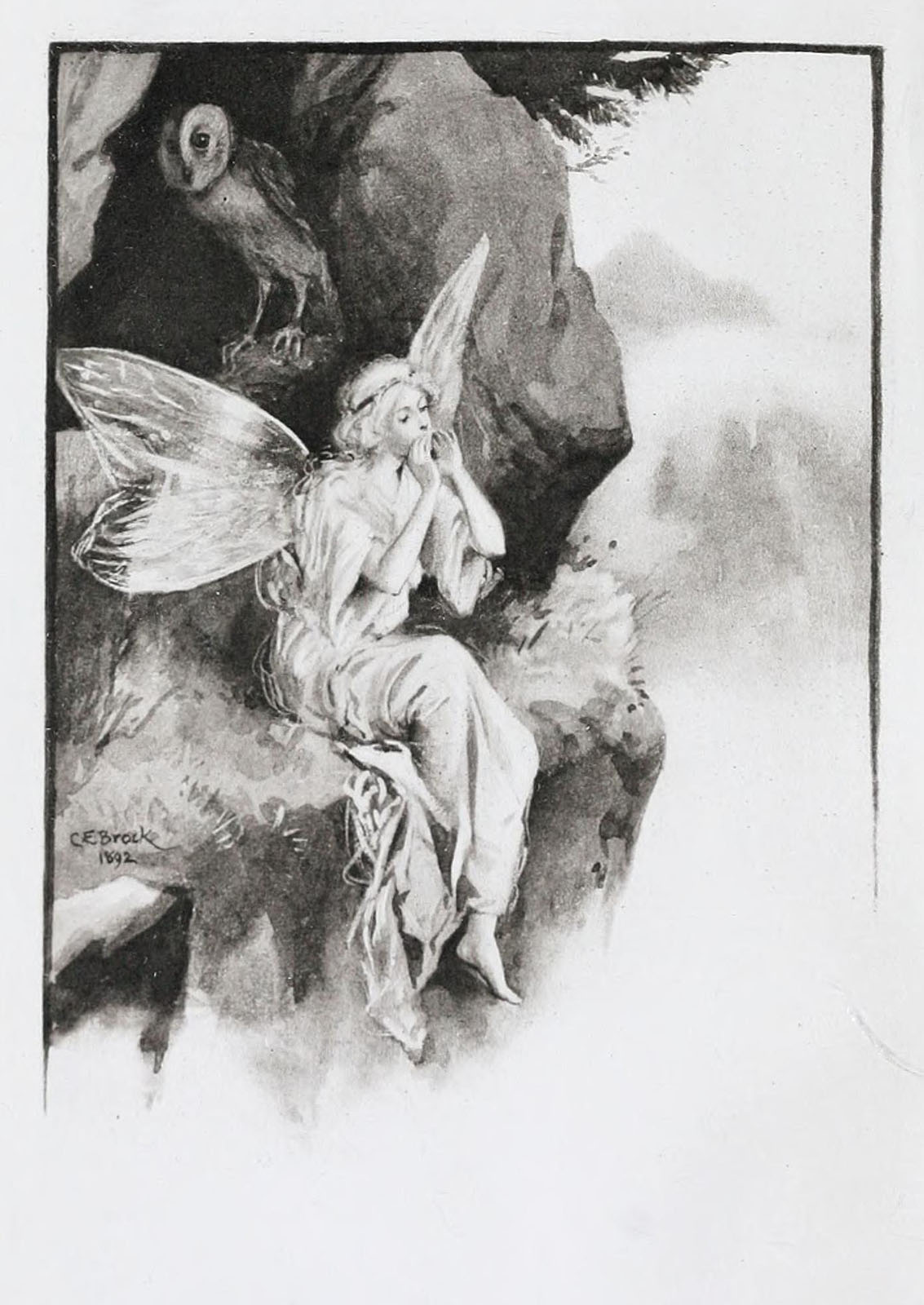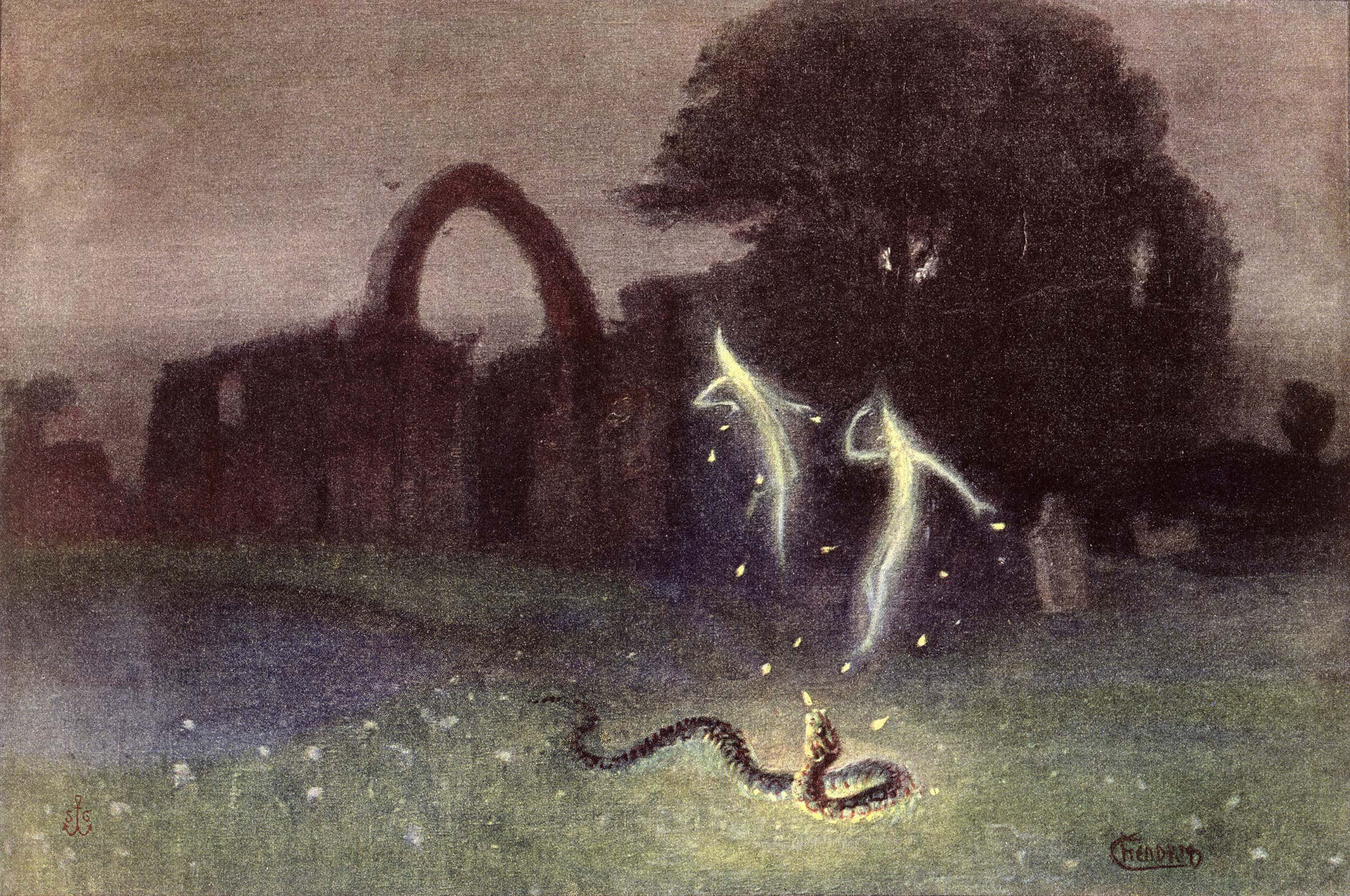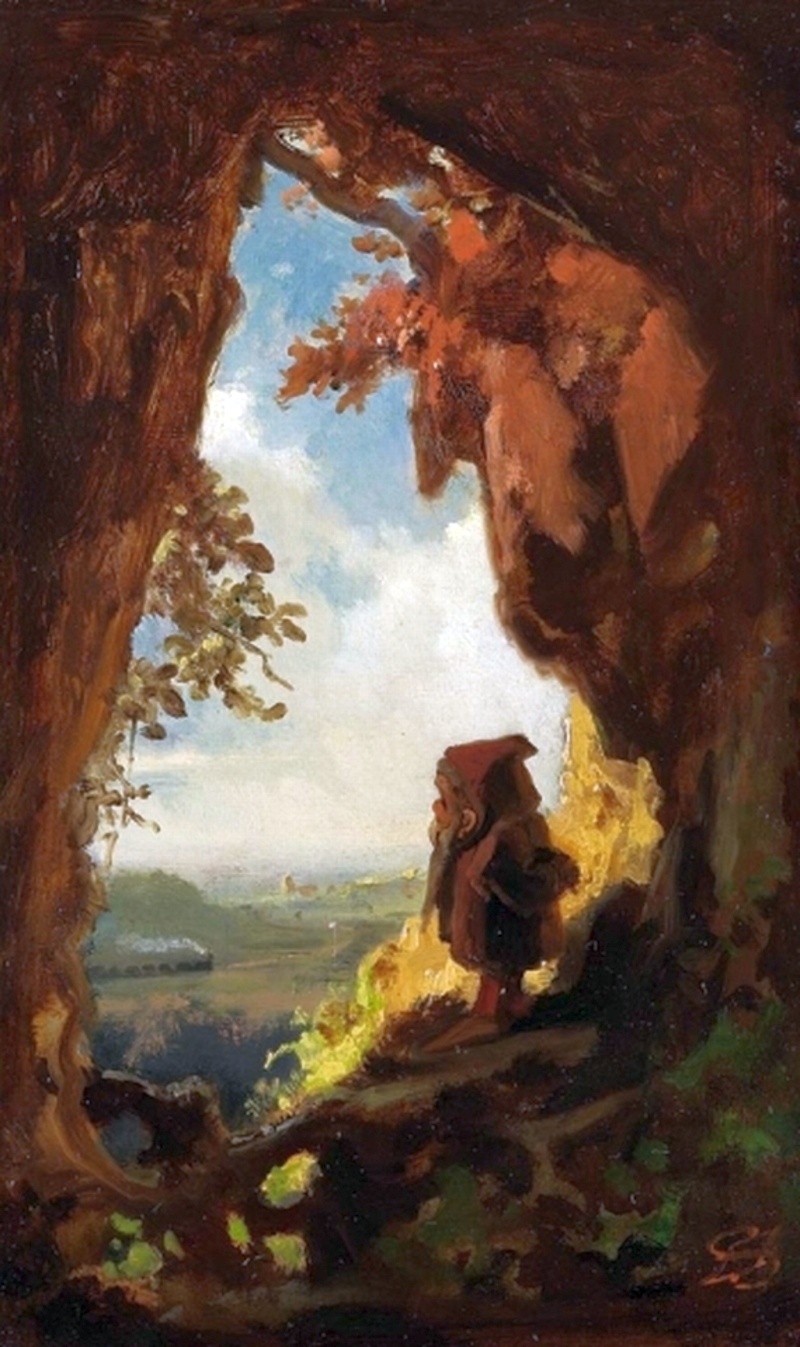|
Fairy
A fairy (also called fay, fae, fae folk, fey, fair folk, or faerie) is a type of mythical being or legendary creature, generally described as anthropomorphism, anthropomorphic, found in the folklore of multiple European cultures (including Celtic mythology, Celtic, Slavic paganism, Slavic, Germanic folklore, Germanic, and French folklore, French folklore), a form of Supernatural#Spirit, spirit, often with metaphysical, supernatural, or preternatural qualities. Myths and stories about fairies do not have a single origin but are rather a collection of folk beliefs from disparate sources. Various folk theories about the origins of fairies include casting them as either demoted angels or demons in a Christian mythology, Christian tradition, as deities in Paganism, Pagan belief systems, as Spirit (supernatural entity), spirits of the dead, as Prehistory, prehistoric precursors to humans, or as spirits of nature. The label of ''fairy'' has at times applied only to specific Magic (su ... [...More Info...] [...Related Items...] OR: [Wikipedia] [Google] [Baidu] |
Goblin
A goblin is a small, grotesque, monster, monstrous humanoid creature that appears in the folklore of multiple European cultures. First attested in stories from the Middle Ages, they are ascribed conflicting abilities, temperaments, and appearances depending on the story and country of origin, ranging from mischievous Household deity, household spirits to malicious, bestial thieves. They often have magical abilities similar to a fairy or demon, such as the ability to Shapeshifting, shapeshift. Similar creatures include brownie (folklore), brownies, dwarf (mythology), dwarves, duendes, gnomes, imps, leprechauns, and kobolds, but it is also commonly used as a blanket term for all small, fay creatures. The term is sometimes expanded to include goblin-like creatures of other cultures, such as the pukwudgie, dokkaebi, or ifrit. Etymology Alternative spellings include ''gobblin'', ''gobeline'', ''gobling'', ''goblyn'', ''goblino'', and ''gobbelin''. The term "goblette" has been used ... [...More Info...] [...Related Items...] OR: [Wikipedia] [Google] [Baidu] |
French Folklore
French folklore encompasses the fables, folklore, fairy tales and legends of the French people. In the Middle Ages Occitan literature - were songs, poetry and literature in Occitan in what is nowadays the South of France that originated in the poetry of the 11th and 12th centuries, and inspired vernacular literature throughout medieval Europe. These early recorded songs, poetry and their highest development in the 12th century and includes the well known ''Songs of the Troubadours'': Songs of the Troubadours * Troubadour, Songs of the Troubadour - The songs, poetry and narratives of the troubadours, who were composers and performers during the High Middle Ages, flourished during the 11th century and spread throughout Europe from Southern France. Their songs dealt mainly with themes of chivalry and courtly love. Several established categories of poetry and song were: **Canso (song), Canso or canson were songs concerning courtly love. **Sirventes songs covered war, politics, morali ... [...More Info...] [...Related Items...] OR: [Wikipedia] [Google] [Baidu] |
Fairyland
Fairyland (Early Modern English: ''Faerie''; ( Scottish mythology; cf. (Norse mythology)) in English and Scottish folklore is the fabulous land or abode of fairies or ''fays''. Old French Old French (, , ; ) was the language spoken in most of the northern half of France approximately between the late 8th [2-4; we might wonder whether there's a point at which it's appropriate to talk of the beginnings of French, that is, when it wa ... (Early Modern English ) referred to an illusion or enchantment, the land of the ''faes''. Modern English (by the 17th century) ''fairy'' transferred the name of the realm of the ''fays'' to its inhabitants, e.g., the expression ''fairie knight'' in Edmund Spenser's ''The Faerie Queene'' refers to a "supernatural knight" or a "knight of Faerie" but was later re-interpreted as referring to a knight who is "a fairy". Folklore Fairyland may be referred to simply as ''Fairy'' or ''Faerie'', though that usage is an archaism. It is often the land ruled ... [...More Info...] [...Related Items...] OR: [Wikipedia] [Google] [Baidu] |
Will-o'-the-wisp
In folklore, a will-o'-the-wisp, will-o'-wisp, or ; ), is an atmospheric ghost light seen by travellers at night, especially over bogs, swamps or marshes. The phenomenon is known in the United Kingdom by a variety of names, including jack-o'-lantern, friar's lantern, and hinkypunk, and is said to mislead and/or guide travellers by resembling a flickering lamp or lantern. Equivalents of the will-o'-the-wisps appear in European folklore by various names, e.g., in Latin, in French, or in Germany. Equivalents occur in traditions of cultures worldwide (cf. ); e.g., the Naga fireballs on the Mekong in Thailand. In North America the phenomenon is known as the Paulding Light in Upper Peninsula of Michigan, the Spooklight in Southwestern Missouri and Northeastern Oklahoma, and St. Louis Light in Saskatchewan. In Arab folklore it is known as . In folklore, will-o'-the-wisps are typically attributed as ghosts, fairies or elemental spirits meant to reveal a path or direction. Thes ... [...More Info...] [...Related Items...] OR: [Wikipedia] [Google] [Baidu] |
Anthropomorphism
Anthropomorphism is the attribution of human traits, emotions, or intentions to non-human entities. It is considered to be an innate tendency of human psychology. Personification is the related attribution of human form and characteristics to abstract concepts such as nations, emotions, and natural forces, such as seasons and weather. Both have ancient roots as storytelling and artistic devices, and most cultures have traditional fables with anthropomorphized animals as characters. People have also routinely attributed human emotions and behavioral traits to wild as well as domesticated animals. Etymology Anthropomorphism and anthropomorphization derive from the verb form ''anthropomorphize'', itself derived from the Greek ''ánthrōpos'' (, "human") and ''morphē'' (, "form"). It is first attested in 1753, originally in reference to the heresy of applying a human form to the Christian God.''Oxford English Dictionary'', 1st ed. "anthropomorphism, ''n.''" Oxford University ... [...More Info...] [...Related Items...] OR: [Wikipedia] [Google] [Baidu] |
Gnome
A gnome () is a mythological creature and diminutive spirit in Renaissance magic and alchemy, introduced by Paracelsus in the 16th century and widely adopted by authors, including those of modern fantasy literature. They are typically depicted as small humanoids who live underground. Gnome characteristics are reinterpreted to suit various storytellers and artists. Paracelsus's gnome is recognized to have derived from the German miners' legend about or , the "metallurgical or mineralogical demon", according to Georg Agricola (1530), also called (literal Latinization of ''Bergmännlein'', "mountain manikin") by Agriocola in a later work (1549), and described by other names such as (sing. ; Latinization of German ). Agricola recorded that, according to the legends of that profession, these mining spirits acted as miming and laughing pranksters who sometimes threw pebbles at miners, but could also reward them by depositing a rich vein of silver ore. Paracelsus also called ... [...More Info...] [...Related Items...] OR: [Wikipedia] [Google] [Baidu] |
Sprite (creature)
A sprite is a supernatural entity in European mythology. They are often depicted as fairy-like creatures or as an ethereal entity. Etymology The word ''sprite'' is derived from the Latin ''spiritus'' ("spirit"), via the French '' esprit''. Variations on the term include ''spright'' and the Celtic '' spriggan''. The term is chiefly used with regard to elves and fairies in European folklore, and in modern English is rarely used in reference to spirits. Belief in sprites The belief in diminutive beings such as sprites, elves, fairies, etc. has been common in many parts of the world, and might to some extent still be found within neo-spiritual and religious movements such as " neo-druidism" and Ásatrú. In some elemental magics, the sprite is often believed to be the elemental of air (see also sylph). Water sprite A water sprite (also called a water fairy or water faery) is a general term for an elemental spirit associated with water, according to alchemist Paracelsus. W ... [...More Info...] [...Related Items...] OR: [Wikipedia] [Google] [Baidu] |
Pixie
A pixie (also called pisky, pixy, pixi, pizkie, piskie, or pigsie in parts of Cornwall and Devon) is a mythical creature of British folklore. Pixies are speculated to be particularly concentrated in the high moorland areas around Devon and Cornwall, suggesting some Celtic origin for the belief and name. However, the word 'pixie' (under various forms) also appears in Dorset, Somerset and to a lesser extent in Sussex, Wiltshire and Hampshire. Similar to the Irish and Scottish '' Aos Sí'' (also spelled ''Aos Sidhe''), pixies are believed to inhabit ancient underground sites such as stone circles, barrows, dolmens, ringforts, or menhirs. In traditional regional lore, pixies are generally benign, mischievous, short of stature, and childlike; they are fond of dancing and wrestling outdoors, of which they perform through the night. In the modern era, they are usually depicted with pointed ears, often wearing a green outfit and pointed hat. Traditional stories describe them as ... [...More Info...] [...Related Items...] OR: [Wikipedia] [Google] [Baidu] |
Mythical
Myth is a genre of folklore consisting primarily of narratives that play a fundamental role in a society. For scholars, this is very different from the vernacular usage of the term "myth" that refers to a belief that is not true. Instead, the veracity of a myth is not a defining criterion. Myths are often endorsed by religious (when they are closely linked to religion or spirituality) and secular authorities. Many societies group their myths, legends, and history together, considering myths and legends to be factual accounts of their remote past. In particular, creation myths take place in a primordial age when the world had not achieved its later form. Origin myths explain how a society's customs, institutions, and taboos were established and sanctified. National myths are narratives about a nation's past that symbolize the nation's values. There is a complex relationship between recital of myths and the enactment of rituals. Etymology The word "myth" comes from Ancient ... [...More Info...] [...Related Items...] OR: [Wikipedia] [Google] [Baidu] |
Folklore
Folklore is the body of expressive culture shared by a particular group of people, culture or subculture. This includes oral traditions such as Narrative, tales, myths, legends, proverbs, Poetry, poems, jokes, and other oral traditions. This also includes material culture, such as traditional building styles common to the group. Folklore also encompasses customary lore, taking actions for folk beliefs, including folk religion, and the forms and rituals of celebrations such as Christmas, weddings, folk dances, and Rite of passage, initiation rites. Each one of these, either singly or in combination, is considered a Cultural artifact, folklore artifact or Cultural expressions, traditional cultural expression. Just as essential as the form, folklore also encompasses the transmission of these artifacts from one region to another or from one generation to the next. Folklore is not something one can typically gain from a formal school curriculum or study in the fine arts. Instead, thes ... [...More Info...] [...Related Items...] OR: [Wikipedia] [Google] [Baidu] |
Paganism
Paganism (, later 'civilian') is a term first used in the fourth century by early Christians for people in the Roman Empire who practiced polytheism, or ethnic religions other than Christianity, Judaism, and Samaritanism. In the time of the Roman Empire, individuals fell into the pagan class either because they were increasingly rural and provincial relative to the Christian population, or because they were not '' milites Christi'' (soldiers of Christ).J. J. O'Donnell (1977)''Paganus'': Evolution and Use, ''Classical Folia'', 31: 163–69. Alternative terms used in Christian texts were '' hellene'', '' gentile'', and '' heathen''. Ritual sacrifice was an integral part of ancient Greco-Roman religion and was regarded as an indication of whether a person was pagan or Christian. Paganism has broadly connoted the "religion of the peasantry". During and after the Middle Ages, the term ''paganism'' was applied to any non-Christian religion, and the term presumed a belief in fal ... [...More Info...] [...Related Items...] OR: [Wikipedia] [Google] [Baidu] |
Motif-Index Of Folk-Literature
The ''Motif-Index of Folk-Literature'' is a six volume catalogue of motifs, granular elements of folklore, composed by American folklorist Stith Thompson (1932–1936, revised and expanded 1955–1958). Often referred to as Thompson's motif-index, the catalogue has been extensively used in folklore studies Folklore studies (also known as folkloristics, tradition studies or folk life studies in the UK) is the academic discipline devoted to the study of folklore. This term, along with its synonyms, gained currency in the 1950s to distinguish the ac ..., where folklorists commonly use it in tandem with the Aarne–Thompson–Uther Index (ATU), an index used for folktale type analysis. As standard tools The motif-index and the ATU indices are regarded as standard tools in the study of folklore. For example, folklorist Mary Beth Stein said that, "Together with Thompson's six-volume ''Motif-Index of Folk-Literature'', with which it is cross-indexed, ''The Types of Folktale'' co ... [...More Info...] [...Related Items...] OR: [Wikipedia] [Google] [Baidu] |









